Best for
Classic Vibes
-
Overall: 9/10
-
Best Feature: Way lighter than older bass amps
-
TedScore™: 9/10
Best Value
for Price
-
Overall: 9/10
-
Best Feature: Exceptional design
-
TedScore™: 9/10
Best for
Studio and Stage
-
Overall: 9/10
-
Best Feature: Exceptional sound quality
-
TedScore™: 9/10
In the world of live music, bassists rely on a good bass amplifier to make sure their sound stands out. Whether you’re playing in small places or big stages, picking the right amp is super important.
This guide will help you understand all the different options available, so you can choose one that fits your style and works well for live performances.
I’ll talk about things like how powerful the amp is, how big the speakers are, and how easy it is to move around.
I want to make sure you pick the best bass amp for gigging that not only sounds great but also works perfectly for your gigs.
I’ve personally tested all the amps on this list, and at the bottom, I’ll tell you my preferred choice.
Understanding the Importance of a Quality Bass Amps
A quality bass amp is a fundamental component for any serious gigging musician.
Unlike regular amplifiers, bass amps are specifically designed to reproduce the low-frequency tones of bass guitars accurately.
The importance of a good bass amp lies in its ability to provide clear, powerful, and responsive sound that complements the unique characteristics of bass instruments.
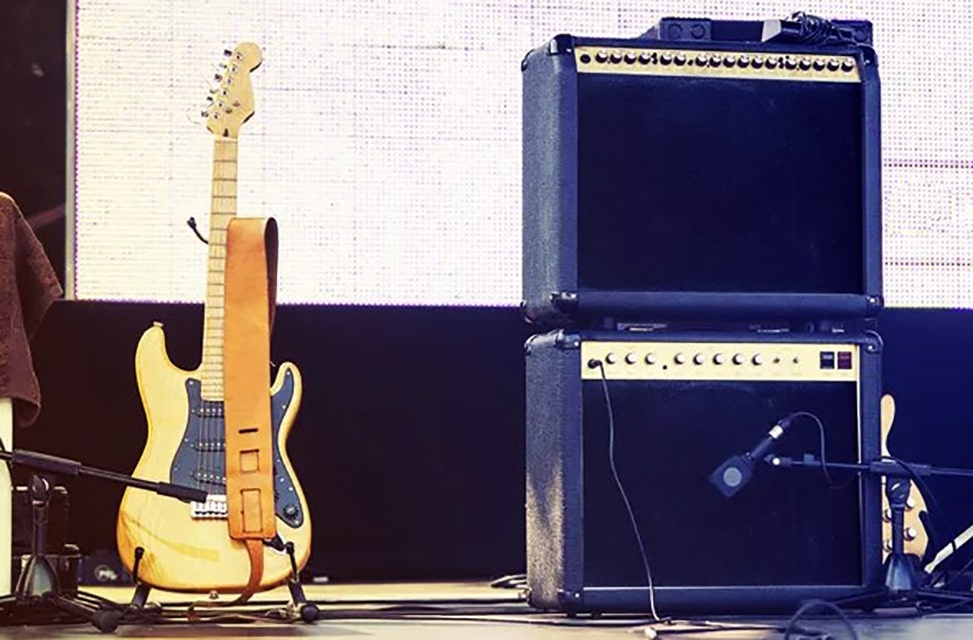
A high-quality bass amp not only enhances the overall performance but also ensures that the bassist’s nuances and dynamics are faithfully reproduced in various live settings.
Factors to Consider When Choosing a Bass Amp for Gigging Musician
As a gigging bassist, your amp is your voice. It translates the low-end thunder of your bass guitar into a powerful presence that drives the groove and complements the band.
Selecting the right amp is crucial, impacting not only your sound but also your playing experience and stage presence.
Here’s a detailed breakdown of key factors to consider when choosing a bass amp for gigging:
1. Power and Wattage: Finding the Right Balance
Wattage reflects an amp’s power output, directly affecting its volume and ability to fill larger spaces. Here’s how to find the sweet spot:
Venue Size:
Small Gigs & Practice (Under 100 people): 15-50 watts offer ample volume for intimate settings and home practice.
Medium Gigs (100-300 people): 100-200 watts provide enough power for clubs and bars, especially with decent PA support.
Large Venues (Over 300 people): 300+ watts become crucial for bigger stages and louder bands.
Playing Style:
Slap & Pick Bass: These techniques benefit from higher wattage (200+) for clear articulation of transients.
Reggae & Dub: A lower wattage amp (50-100w) might be sufficient for emphasizing low-end growl in smaller venues.
2. Portability and Durability: Essential Features for Gigging
Gigging musicians often face the challenge of transporting equipment from one venue to another.
Therefore, portability and durability are essential features to consider when choosing a bass amp. Combo amps (speaker and amplifier integrated) are lighter and easier to transport.
For larger venues, separate heads and cabinets offer more power but are less portable.
Look for a well-built amp with quality components. Consider features like metal corners, casters for rolling, and tolex covering for impact protection.
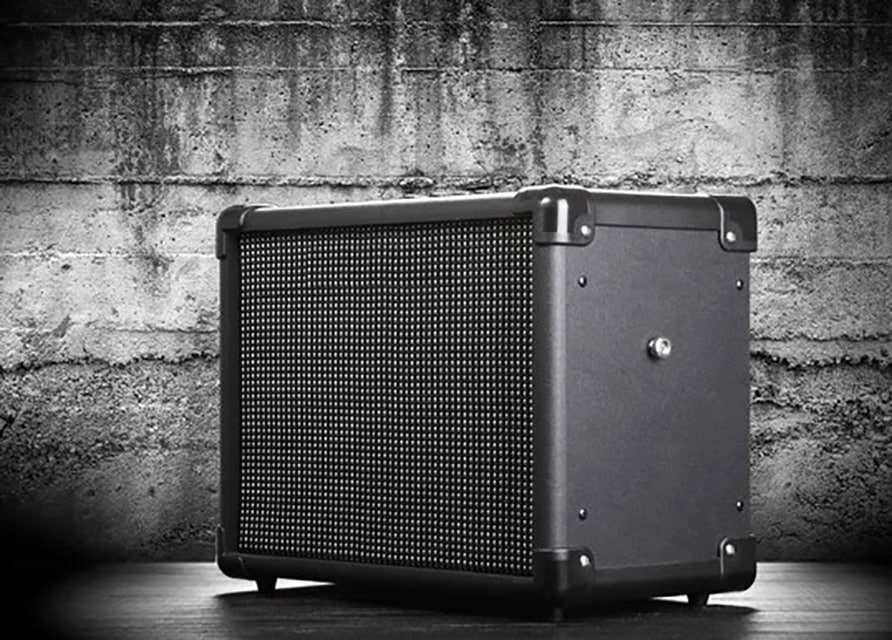
3. Tone and Sound Quality: Ensuring an Impressive Performance
Your amp should accurately translate your bass’s natural tone and allow for shaping it to your preferences. Consider:
Solid-State vs. Tube Amps:
Solid-State: Lightweight, reliable, and offers a wide range of built-in EQ and effects.
Tube Amps: Warmer, richer sound, but heavier, more expensive, and require maintenance.
EQ and Voicing: Choose an amp with an EQ section that allows you to sculpt your sound (bass, mid, treble) and includes features like a bright switch or a vintage/modern voicing option. Consider amps with built-in compressors or overdrive effects to add grit and punch to your sound, especially for genres like rock or funk.
4. Connectivity and Versatility: Adapting to Different Gig Settings
Versatility in connectivity is essential for adapting to various gig settings and accommodating different instruments and audio setups.
Consider bass amps equipped with multiple input/output options, including XLR, quarter-inch, and auxiliary inputs, as well as direct output for connecting to PA systems or recording interfaces.
Additionally, features like built-in tuners and headphone outputs can add further flexibility to your setup.
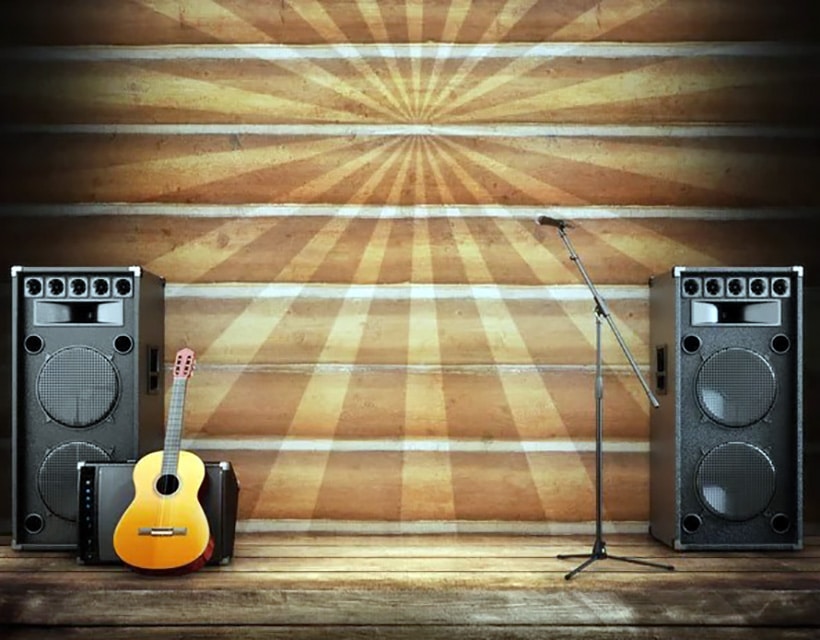
5. User-Friendly Features: Enhancing Your Gigging Experience
Controls: Look for an amp with well-labeled, intuitive controls that are easy to adjust on stage. Consider features like a built-in tuner to quickly ensure your intonation is spot-on between sets. A footswitch input allows you to remotely control certain amp functions, like turning on/off effects or muting the output for silent tuning.
Practice Features: Built-in metronome, headphone jack with speaker emulation, and auxiliary input can be valuable practice tools. Some amps even offer built-in DI simulation, allowing you to record directly into a recording interface or PA system without needing a separate DI box.
6. Long-Term Investment: Considering Maintenance and Upgradability
Think about the long-term maintenance and upgradability of your chosen amp. Look for brands with a reputation for reliability and excellent customer support.
Consider whether the amp offers easy access to internal components for servicing or upgrades. Modular designs and user-replaceable parts can extend the lifespan of your amp and save on repair costs over time.
Research the availability of aftermarket upgrades or modifications that can enhance your amp’s performance or tailor it to your specific preferences.
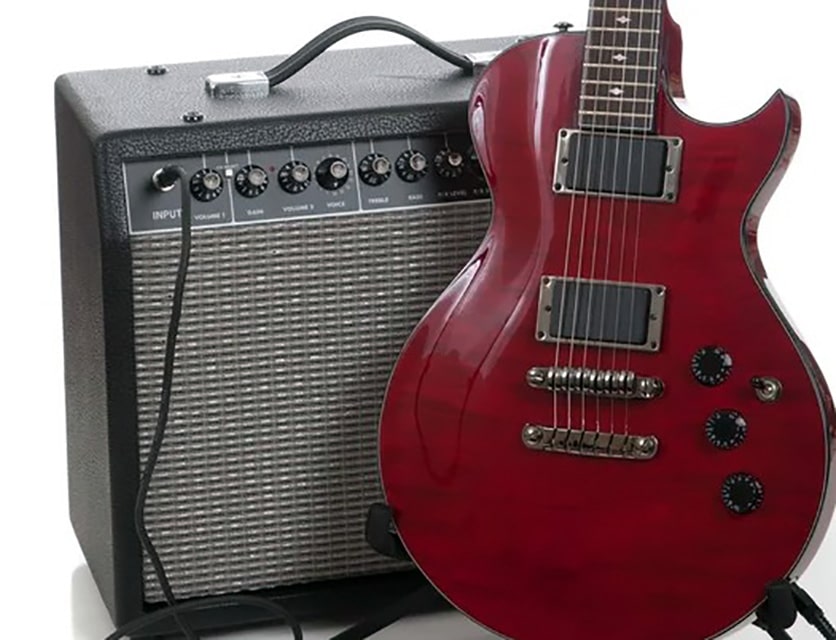
Top 7 Picks: Reviews of the Best Bass Amps for Gigging
For bassists, selecting the optimal amplifier directly impacts their ability to project a solid foundation in any live performance setting. Here’s a curated selection of top contenders catering to various gigging requirements:
Fender Rumble 500 (V3)
The Fender Rumble 500 bass combo amplifier is designed to be a comprehensive solution for bassists of all levels. It excels in both live performance and practice settings, offering a compelling blend of power, sonic versatility, and user-friendly features.
At its core, the Rumble 500 boasts a formidable 500 watts of output, guaranteeing that your bass lines will be heard with clarity and precision, even in dense mixes. Equipped with dual 10-inch Eminence-designed ceramic magnet speakers, this amp delivers a rich, powerful sound that will captivate audiences of any size.
But the Rumble 500 goes beyond just raw power. It prioritizes practicality as well. A conveniently located headphone jack allows for silent practice, ideal for late-night sessions or confined environments like hotel rooms.
Built to last, the Rumble 500 features a robust yet lightweight plywood cabinet. A molded plastic strap handle with nickel-plated caps ensures comfortable and secure carrying during transport.
Best Bass Amps for Practice
Fender Rumble 500 (V3)

FEATURES: Amplifier Type: Class-D
OTHER INFO: Dimensions: 17.6" x 23.1" x 27"
- Solid build quality yet lightweight
- Great sound quality, punchy and sweet even at lower volumes
- Wide range of tonal possibilities with easy to use controls
- Loud enough for small gigs even with a drummer
- Affordable price
- Works well for a variety of musical styles including slap
- At higher volumes, the sound may become muddy
- Some users may prefer additional connectivity options.
When you click ‘Check Price’, you’ll see there are loads of great places to buy this item. Our personal favorite is Sweetwater for the US, and Thomann and Gear4Music for the UK & Europe.
They are the largest music retailers, with excellent customer service, competitive prices, really fast shipping, and the longest guarantees.
The professional musician who wrote this article combined many things,
from the product build, manufacturer’s reputation through to feedback
from other users, to create our famous TedScore™.
Orange Crush Bass 100 Combo
The Orange Crush Bass 100 amplifier delivers exceptional sonic control and robust power for bassists seeking a versatile and professional-grade instrument platform. Its centerpiece is a meticulously designed EQ section inspired by Orange’s acclaimed 4 Stroke Series, featuring a parametric mid band for unparalleled precision in tone shaping.
This innovative EQ boasts a wide frequency sweep (300Hz to 2.7kHz) and active circuitry, enabling ±15dB of boost/cut on bass and mids, and a substantial ±20dB of adjustment on the treble. This granular control empowers bassists to meticulously sculpt their sound to perfectly complement any musical genre.
At the core of the Crush Bass 100 lies a formidable 100-watt output stage, engineered to deliver clear and potent low-end across a variety of performance spaces. The amplifier utilizes discrete circuitry for exceptional transparency and definition, guaranteeing a dynamic and uncolored sonic response.
The meticulous design extends to the 15-inch speaker and reflex port configuration, meticulously crafted to provide a rich and full-bodied low-end complemented by a uniquely balanced mid-range that injects warmth and character into the overall tone. Additionally, a buffered effects loop ensures the integrity of your instrument’s and pedals’ natural tonal characteristics, fostering seamless integration of your entire signal chain.
The Crush Bass 100 embodies Orange’s enduring legacy of quality and pioneering spirit. Established in London in 1968, Orange has continuously redefined the boundaries of bass amplification. This exceptional amplifier caters to both seasoned professionals and aspiring bassists alike, offering a platform to ignite creative expression and elevate performances to new heights.
Best Bass Amps for Tone Shaping
Orange Crush Bass 100 Combo
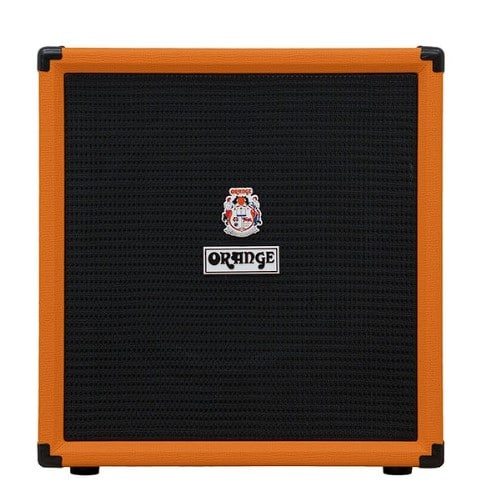
FEATURES: 3-band EQ
OTHER INFO: Unboxed weight: 24.25kg
- Exceptional tonal control with wide frequency sweep and active circuitry
- Rich low-end with full-bodied clarity thanks to 15" speaker and reflex port
- Transparent and dynamic performance with discrete circuitry design
- Preserves natural tone with buffered effects loop
- Durable construction and versatile for various genres
- Limited to single channel operation
- May lack built-in features like compression or distortion for some players
- No built-in digital effects or presets The TedScore: 8/10
When you click ‘Check Price’, you’ll see there are loads of great places to buy this item. Our personal favorite is Sweetwater for the US, and Thomann and Gear4Music for the UK & Europe.
They are the largest music retailers, with excellent customer service, competitive prices, really fast shipping, and the longest guarantees.
The professional musician who wrote this article combined many things,
from the product build, manufacturer’s reputation through to feedback
from other users, to create our famous TedScore™.
Hartke Kickback 15 Bass Combo
This awesome amp has been updated with cool new features while keeping it lightweight and easy to use. With 500 watts of power, it gives you a strong bass sound that stands out whether you’re playing at home or on stage.
The Kickback KB15 comes with a special 15-inch speaker that mixes paper and aluminum for a cool sound that’s both warm and punchy. You can adjust your sound easily with the Shape knob and the 3-band EQ, so you can get just the right mix of deep bass and clear highs. The Shape knob also lets you choose from different preset sounds to get the perfect tone for your style.
Whether you’re playing standing up or tilting the amp back for better sound, the KB15’s design makes sure your music sounds great no matter where you are. And it’s got handy features like a headphone jack for quiet practice and an XLR output for connecting to a bigger sound system when you’re playing live.
Best Bass Amps for Tone Shaping
Hartke Kickback 15 Bass Combo

FEATURES:2-way (upright and "kickback") cabinet design
OTHER INFO: 1⁄4" passive/active bass input
- Exceptional portability and lightweight design
- Powerful sound output that cuts through the mix effortlessly
- Unique HyDrive Speaker Technology for a blend of warmth and attack
- Versatile tone control with Shape knob and full 3-band EQ
- Can be positioned upright or in "kickback" mode for enhanced clarity
- May be pricey for beginners on a tight budget
- Limited options in the tone shaping department
When you click ‘Check Price’, you’ll see there are loads of great places to buy this item. Our personal favorite is Sweetwater for the US, and Thomann and Gear4Music for the UK & Europe.
They are the largest music retailers, with excellent customer service, competitive prices, really fast shipping, and the longest guarantees.
The professional musician who wrote this article combined many things,
from the product build, manufacturer’s reputation through to feedback
from other users, to create our famous TedScore™.
Ashdown ABM 600 Evo IV 600w Bass Head
Crank it up to rockstar with the Ashdown ABM 600 Evo IV! This 600-watt bass amp head punches out serious sound, whether you’re after sparkling clean tones or that super-fat, full-on overdrive. The secret sauce? A tricked-out pre-amp that lets you dial in exactly the tone you crave. Plus, the new 9-band EQ is like having a sound shaping superpower – tweak your bass to perfection!
Remember that killer squish you get from a compressor? The ABM 600 Evo IV has that built-in, with a handy one-knob control for easy tweaking. And bassists love Ashdown’s sub-harmonic generator – it adds that deep, rumbling low-end to your sound, making your bass lines massive.
This amp isn’t just about killer tone, it’s packed with features to make your life easier. Connect your tuner, loop in pedals, and even hook up an extra sound source – the ABM 600 Evo IV plays well with others. There’s even an optional footswitch so you can change your sound on the fly, mid-song!
Best Bass Amps for Vintage Tone
Ashdown ABM 600 Evo IV 600w Bass Head
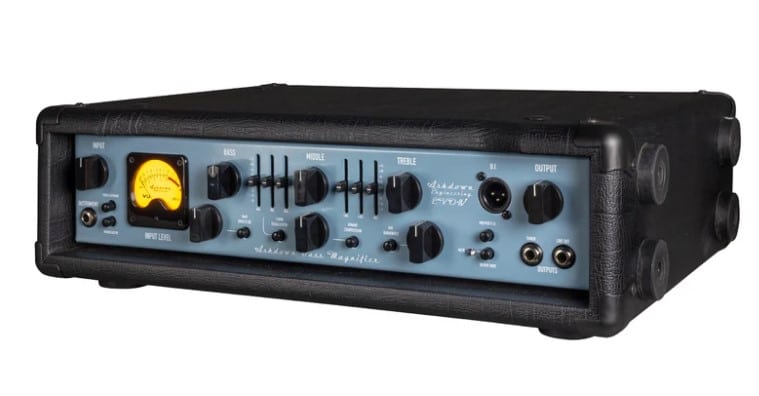
FEATURES: Power Requirements: 115-230 Volts
OTHER INFO: Frequency Response: 17Hz - 30kHz
- Hand-wired assembly ensures durability
- Easily replaceable components enhance reliability.
- Modern features like variable valve drive preamp and nine-band EQ.
- Versatile controls for nuanced tone shaping.
- Effective compressor adds sustain.
- Distinctive sound blends vintage warmth with modern punch.
- Weight may pose transportation challenges.
- May require significant EQ adjustments between different basses.
- Compressor function may not be universally liked or easily understood.
When you click ‘Check Price’, you’ll see there are loads of great places to buy this item. Our personal favorite is Sweetwater for the US, and Thomann and Gear4Music for the UK & Europe.
They are the largest music retailers, with excellent customer service, competitive prices, really fast shipping, and the longest guarantees.
The professional musician who wrote this article combined many things,
from the product build, manufacturer’s reputation through to feedback
from other users, to create our famous TedScore™.
Fender Rumble Combo, 230V EU
This amp, the Rumble 800 Combo, is super powerful at 800 watts. It can make your bass sound really clear and strong, even in noisy places.
It has three different sound settings: Contour, Bright, and Vintage. The Bright one makes your bass sound sharp and clear, Contour gives it a strong, standout tone, and Vintage makes it sound warm and full, like old amps. You can switch between these settings easily while playing.
You can adjust lots of things to get the sound you want, like Drive, Gain, and Level controls, Treble, plus Bass, Low-Mid, High-Mid, and Master settings. This means you can make your bass sound just right for any song.
Even though it’s powerful, it’s really easy to carry around because it’s lightweight, only 27.5 pounds. The size is compact too, with 2 x 10 speakers, but it still sounds big.
For recording, it’s great because it has an XLR output, which makes it easy to connect to recording equipment without needing a microphone. It also has an effects loop, so you can connect your pedals and they’ll sound consistent and good every time.
Best Bass Amps for Big Tone
Fender Rumble Combo, 230V EU

FEATURES: Black Textured Vinyl
OTHER INFO: Accessories: Footswitch
- Portable all-in-one design for convenient gigging.
- Versatile EQ and gain controls for extensive tone shaping
- Built-in effects loop for seamless integration of stompboxes.
- XLR output for easy studio recording without microphones
- Custom-designed Eminence® Neodymium speakers for exceptional sound clarity.
- Might be a beast for tiny gigs or bedroom practice.
- Not as warm as some older tube amps.
- No extra speakers with those lightweight Neodymium things (yet).
When you click ‘Check Price’, you’ll see there are loads of great places to buy this item. Our personal favorite is Sweetwater for the US, and Thomann and Gear4Music for the UK & Europe.
They are the largest music retailers, with excellent customer service, competitive prices, really fast shipping, and the longest guarantees.
The professional musician who wrote this article combined many things,
from the product build, manufacturer’s reputation through to feedback
from other users, to create our famous TedScore™.
Ampeg Rocket Bass 210
Boasting an Ampeg Legacy preamp and Class D power amp, alongside dual 10″ Eminence speakers, it delivers a robust and adaptable tone. Incorporating Super Grit Technology (SGT) overdrive circuitry, it offers players the ability to enhance their sound with grit and volume, while the inclusion of a 3-band EQ and Ultra Hi/Ultra Lo switches ensures precise sound shaping.
Designed with mobility in mind, the Rocket Bass 210 features a lightweight build and various input/output options. With an aux input, bassists can easily incorporate an MP3 player for practice sessions, while the XLR output and ground lift button facilitate direct connectivity to venue sound systems. Additionally, the headphone output and external effects loop enable quiet practice and further sound customization.
The amplifier’s vintage charm and punchy sound are attributed to the revered Ampeg legacy preamp, celebrated for its harmonic richness and extensive influence in rock music over the decades.
Part of the broader Rocket Bass lineup, which encompasses models ranging from 30 to 500 watts, the Rocket Bass 210 and its counterparts prioritize portability without compromising on performance. This family of amplifiers merges exceptional sound quality, classic aesthetics reminiscent of the ’60s, and robust feature sets within compact and portable enclosures.
Best Bass Amps for Lightweight Powerhouse
Ampeg Rocket Bass 210

FEATURES:Inputs: 2 x Instrument, 1 x 1/8"
OTHER INFO:LF Driver: 2 x 10" Custom Eminence Speakers
- Clean, full sound, and keeps it clear even when you crank it up
- Enough power for gigs and rehearsals, even outside
- Way lighter than older bass amps
- Plays all sorts of music (except maybe reggae)
- Lets you add another speaker if you want even more boom
- Classic Ampeg style
- Built tough
- May have a humming noise
- Lacks clarity for reggae (better suited for other genres)
- No gain knob (on some models)
When you click ‘Check Price’, you’ll see there are loads of great places to buy this item. Our personal favorite is Sweetwater for the US, and Thomann and Gear4Music for the UK & Europe.
They are the largest music retailers, with excellent customer service, competitive prices, really fast shipping, and the longest guarantees.
The professional musician who wrote this article combined many things,
from the product build, manufacturer’s reputation through to feedback
from other users, to create our famous TedScore™.
Markbass CMD 102P IV Bass Combo Amp
This amp is a beast!
It pumps out a ton of sound, 500 watts worth (enough to rattle the windows at a big venue), but it still keeps your tone clean and warm. Don’t worry about sounding muddy, even at high volumes.
This amp has a super flexible EQ with four bands, letting you adjust everything from the super boomy lows to the sparkly highs. Need something quick and easy? There’s a handy switch with three settings: normal, scooped for extra bite, or one that lets you mute and adjust the EQ with a foot pedal (not included).
Connecting your stuff is a breeze. It’s got the usual input for your guitar, a jack for a foot pedal, an output for your tuner, and a special output that plugs straight into a mixing board for recording or playing live. And if you ever need even more volume, you can add another speaker cabinet to this amp.
This amp is built for gigging musicians. It tilts back a bit so you can hear yourself clearly onstage, no matter how loud the band gets. Plus, it’s all in one compact and lightweight package, so you can easily toss it in your car and hit the road.
Here’s the technical stuff for the gearheads: two 10-inch speakers and a tweeter thingy for a wide range of sound (from super low bass to super high treble), and it can get insanely loud (100 dB SPL).
Best Bass Amps for Precision Stage Monitoring
Markbass CMD 102P IV Bass Combo Amp

FEATURES:Frequency response: 45 Hz to 18 kHz
OTHER INFO: 3 Way Switch: Flat/Scooped-Mid/Fsw
- Exceptional sound quality with praised clarity, depth, and smoothness.
- Powerful and compact design delivers impressive volume despite its lightweight build.
- User-friendly design with a convenient pop-out panel for easy access to controls.
- Highly versatile performance across musical genres and settings.
- Demonstrated durability and reliability.
- Limited preamp features, like the absence of a mute switch for tuning.
When you click ‘Check Price’, you’ll see there are loads of great places to buy this item. Our personal favorite is Sweetwater for the US, and Thomann and Gear4Music for the UK & Europe.
They are the largest music retailers, with excellent customer service, competitive prices, really fast shipping, and the longest guarantees.
The professional musician who wrote this article combined many things,
from the product build, manufacturer’s reputation through to feedback
from other users, to create our famous TedScore™.
Tips for Getting the Most Out of Your Bass Amp During Gigs
As a gigging musician, your bass amp is your sonic anchor, providing the foundation upon which your entire performance rests.
To ensure that your bass frequencies are felt as much as they are heard, and that your sound cuts through the mix with clarity and power, it’s crucial to master the capabilities of your bass combo amp.
Whether you’re rocking a classic Fender Rumble Stage or any other model, here are some essential tips to help you get the most out of your bass amp during gigs:
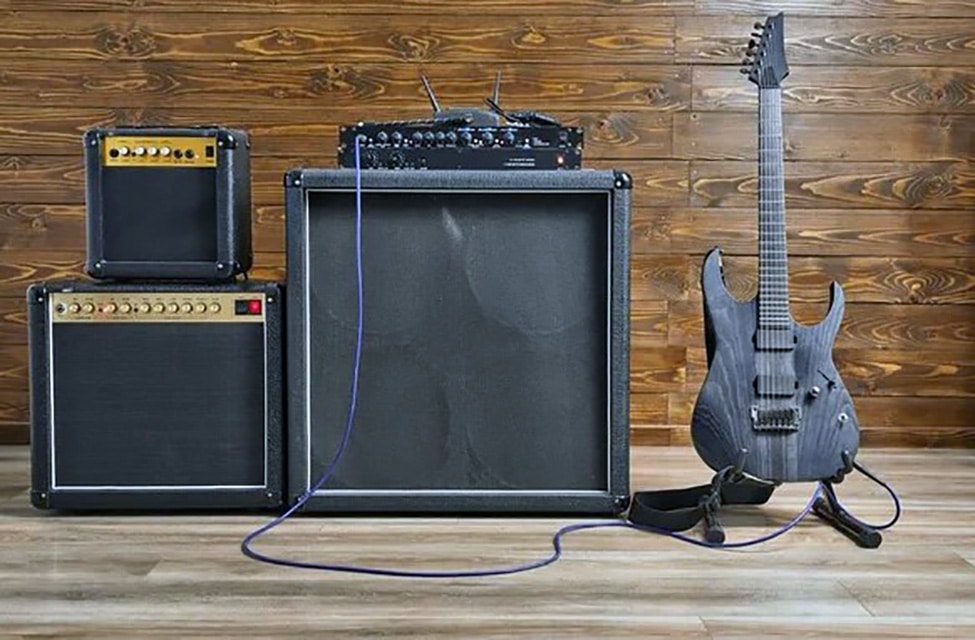
Bass frequencies are the heartbeat of your music, providing warmth, depth, and groove.
Familiarize yourself with the range of frequencies your bass guitar produces, from the rumbling lows to the punchy mids and crisp highs.
This understanding will help you dial in the perfect tone on your amp and ensure that your basslines are felt by every listener in the venue.
Take the time to explore all the features and controls of your bass combo amp. Understand the functions of knobs such as gain, EQ (equalization), and master volume control.
Experiment with different settings to discover how they affect your tone and volume levels.
This familiarity will give you the confidence to adapt your sound on the fly during gigs, ensuring that you always sound your best.
The EQ section of your bass amp is your secret weapon for sculpting your tone to perfection. Use the bass, midrange, and treble controls to fine-tune the balance of frequencies according to the acoustics of the venue and the needs of the music.
For example, boosting the bass frequencies can add weight to your sound, while cutting the mids can help your basslines cut through a dense mix.
Test with different EQ settings during soundcheck to find the sweet spot for each song in your setlist.
Compression serves as a valuable tool for professional bassists. By regulating the dynamic range of the incoming signal, compression ensures a consistent and punchy sound, regardless of playing intensity.
This is particularly critical in live performance scenarios, where fluctuating dynamics can disrupt the overall mix. Modern bass combo amplifiers often integrate built-in compressor functionality.
Experimentation with these controls is key to achieving the perfect balance between dynamic expression and tonal clarity that complements your playing style.
Subtle taming of peaks and sustaining of quieter notes allows the bass lines to seamlessly integrate within the mix, offering both sonic power and articulation.
Within a professional band setting, the bass amp transcends a solo instrument’s role. It thrives on collaboration, weaving its sound amongst the other instruments to create a cohesive whole. Here, the concept of “finding your sweet spot” becomes paramount.
Professional bassists actively listen to their bandmates, adjusting their equalization (EQ) settings accordingly.
Gain and master volume controls become strategic tools, allowing the bassist to assert their presence while seamlessly integrating with the ensemble.
This collaborative approach ensures that the bass provides the essential foundation without overpowering or muddying the overall sonic landscape.
While effects pedals like distortion, chorus, and reverb can add a touch of personality and depth to a bass tone, professional bassists understand the importance of judicious application.
The core of the sound should always emanate from the natural character of the instrument itself. During rehearsals, professional bassists experiment with effects sparingly and tastefully, seeking those that subtly enhance their lines without overshadowing the overall sonic picture.
A judicious approach to effects application ensures that the bass lines retain their clarity and power, while adding a touch of personal flair within the context of the band’s sound.
The professional bassist understands that their amp is only as effective as the signal chain connecting it to the instrument and external equipment. Investing in high-quality cables, connectors, and power supplies becomes paramount.
These components safeguard against signal loss and unwanted electrical interference, guaranteeing reliable performance and the uncompromised transmission of the crafted tonal nuances.
Furthermore, maintaining a stock of spare cables and accessories becomes a crucial part of a professional’s preparedness. Should any technical gremlins arise during a gig, having readily available replacements minimizes downtime and ensures a seamless performance.
While the technical aspects of amplification are important, the cornerstone of a professional bassist’s success lies in dedication to practice. Regular and focused practice sessions are essential for refining one’s technique, achieving tonal mastery, and fostering an intimate understanding of the instrument’s sonic potential.
This translates directly to the stage, where a practiced bassist possesses the confidence to experiment with different sounds and settings, expressing themselves fully within the musical tapestry.
The more a bassist hones their craft and explores the capabilities of their amp, the more they can unlock its full potential and deliver impactful, expressive performances that elevate the entire band’s sound.
Best Bass Amp For Gigging
Summary
Alright, that’s it for our bass amp smackdown! I threw some awesome options at you, but the truth is, the perfect amp is like your favorite pair of jeans – gotta find the one that fits just right.
If I had to choose though, my favourite (and in fact, I did purchase one after testing) was the Markbass CMD 102P IV. It’s such a beast, makes a great sound, and I think is really good value for money.
But think about the kind of music you crank out, the size of the gigs you usually play, and what matters most to you.
Do you want something light and fancy with a bunch of sounds, or are you all about pure power and that classic tone?
No matter how you roll on stage, there’s an amp out there waiting to be your low-end thunder buddy.
Now spill the beans! What are the must-have features for your dream bass amp? Hit the comments and let me know! – then check out The 14 Best Bass Amps.
FAQ's
Ultimately, the ideal wattage depends on your specific needs. Here’s a general guide:
-
Small venues (coffee shops, cafes): 30-50 watts
-
Medium venues (bars, clubs): 100-200 watts
-
Large venues (halls, theaters): 300+ watts
Remember: Consider your band’s volume and the venue’s size. It’s always better to have more power than you might initially need. You can always turn down a powerful amp, but you can’t boost a weak one.
Additional Tips:
-
Bass combo amps offer a convenient all-in-one solution with the amplifier and speaker housed together.
-
Explore features like EQ controls, built-in effects, and headphone jacks for practice versatility.
-
Unlike guitar amps, bass amps are designed to handle the lower frequencies of bass guitars. Using a regular guitar amp for bass can damage the speaker.
While a 100-watt bass amp can be your trusty companion for jamming with friends or gigs in cozy cafes, its power might not translate well to larger stages. It might struggle to compete with a booming drum set or keep up with the overall volume in a spacious venue.
To avoid getting lost in the mix, consider a bigger amp or using the venue’s PA system to mic your sound and project it clearly. Remember, the way a speaker utilizes its wattage and the overall design of the amp itself can also affect how loud it feels.
The best way to know if a 100-watt amp is enough for your gigs is to try it out in different settings and see if it can hold its own.
Absolutely! 200-watt bass combo amps are a popular choice for gigging musicians due to their ability to handle most mid-sized performance spaces.
They provide a good balance between volume and portability, allowing you to project your sound effectively without excessive weight during load-in and load-out.
A 30-watt bass amp may struggle to provide adequate volume and projection for most gigging situations, especially in settings with amplified instruments such as guitars and drums.
While it could suffice for very small, acoustic-style performances or practice sessions, it may lack the power needed to cut through the mix in a live band scenario.



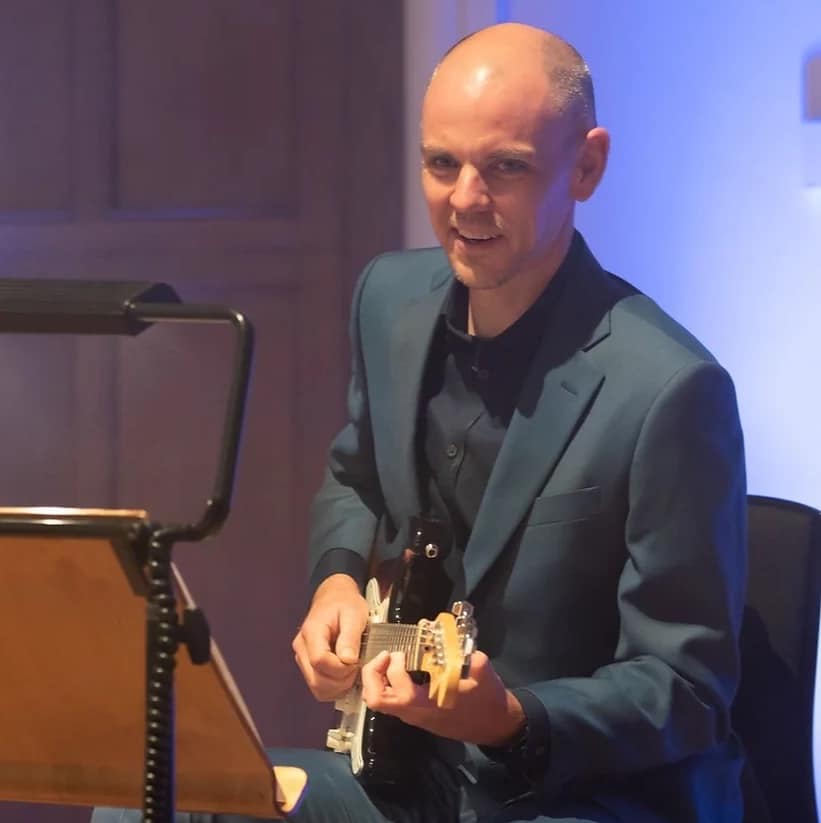






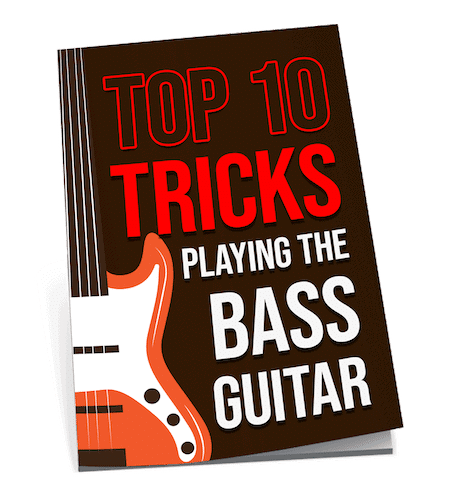
This article presents an interesting overview of options for gigging musicians, particularly emphasizing the diversity of requirements based on venue size and individual musician’s tone preference. It’s clear a lot of thought went into selecting the amps for review. However, I’m curious about the absence of more budget-friendly options for musicians who are perhaps not gigging as frequently or just beginning to explore live performance settings. Additionally, the aspect of digital modeling amps and their place in modern gigging scenarios seems to be an angle worth exploring. While the details provided are informative, a broader spectrum of options might provide a more comprehensive guide to making an informed purchase decision.
The thing about this list, it’s all well and good but it always comes down to the context of your gig. Some of these amps are overkill for a coffee shop set. Also, no mention of amp sims for those of us going the digital route in smaller venues. Missed opportunity there, Lewis Turner.
hey, do u think a beginner like me should invest in something like the Rumble 500? kinda pricey for just starting out right?
Really pleased to see the Fender Rumble 500 on your list, Lewis Turner! I’ve used it for years on the road, and it’s never let me down. It’s the perfect balance of power and portability for most gigs. For anyone looking into gigging amps, this article hits the nail on the head with the essential factors. Keep rocking, everyone!
Totally agree with TinaG. The Rumble series is solid. Been using mine in small bars and it’s perfect.